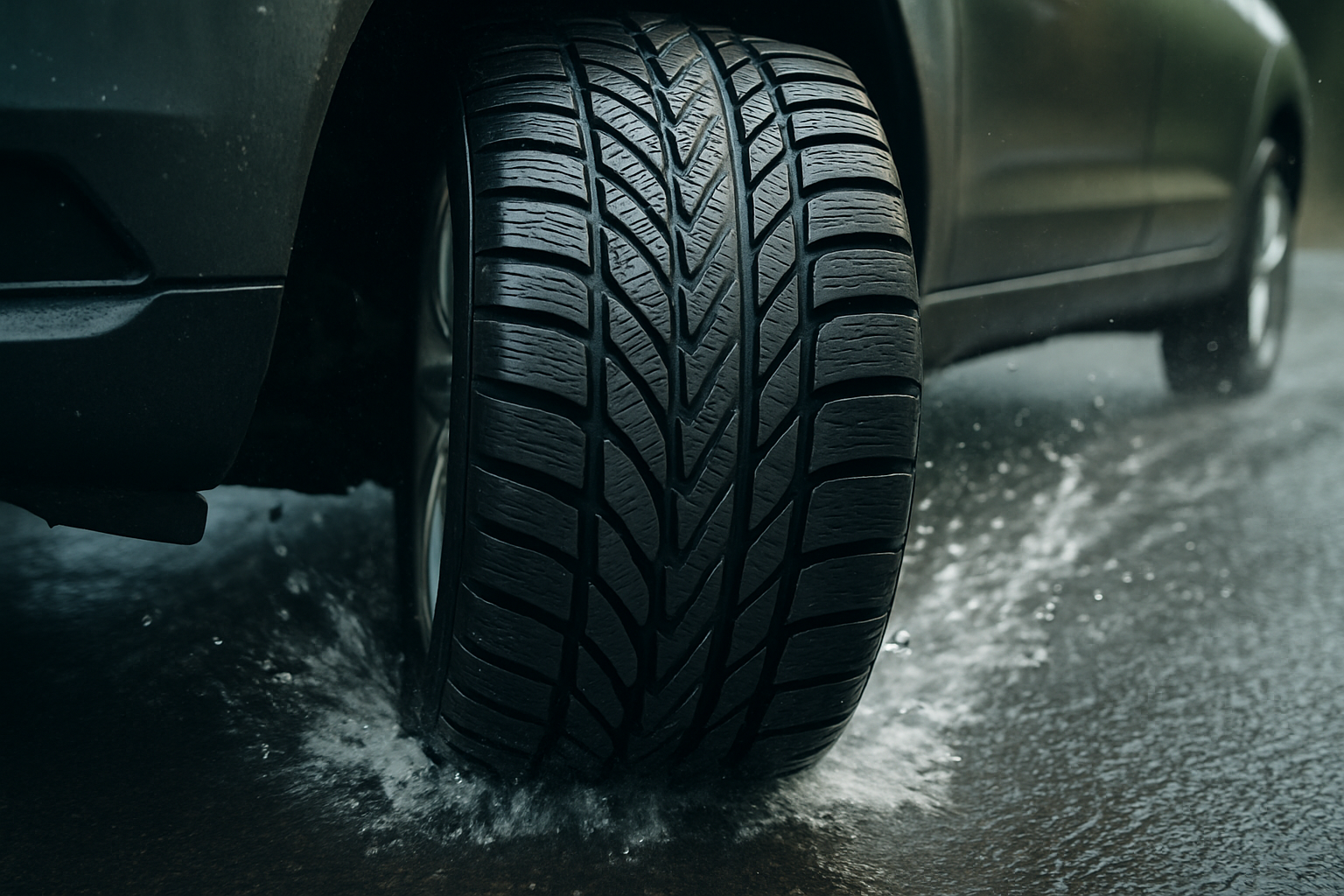Hydroplaning: The Unseen Threat on Wet Roads
Water-slicked roads pose a hidden danger that can catch even the most experienced drivers off guard. Hydroplaning, a phenomenon where tires lose contact with the road surface due to a layer of water, transforms familiar streets into treacherous paths. This article delves into the science behind hydroplaning, its impact on vehicle control, and cutting-edge strategies to keep drivers safe when the heavens open up.

The Science of Skimming
Hydroplaning occurs when a wedge of water builds up in front of the tire faster than it can be dispersed. As speed increases, tire treads struggle to channel water away efficiently, leading to a loss of contact with the road surface. This phenomenon is influenced by various factors, including tire tread depth, vehicle speed, road texture, and water depth.
At lower speeds, tire treads can effectively disperse water, maintaining crucial road contact. However, as velocity increases, the time available for water displacement diminishes. When the critical speed is reached—typically around 50-60 mph on wet roads—the tire begins to ride on a thin film of water, much like a water ski gliding across a lake surface.
Tread Depth: Your First Line of Defense
Tire tread design plays a pivotal role in combating hydroplaning. Modern tire treads are engineered with complex patterns and sipes—small slits in the rubber—that work in concert to channel water away from the contact patch. As tires wear, their ability to disperse water diminishes, increasing hydroplaning risk.
Manufacturers have developed innovative tread patterns that maintain performance even as the tire wears. Some designs incorporate expanding grooves that widen as the tire ages, ensuring consistent water dispersion throughout the tire’s lifespan. Regular tread depth checks and timely tire replacement are crucial for maintaining optimal wet-weather performance.
Vehicle Dynamics and Hydroplaning
A vehicle’s weight distribution, suspension setup, and overall design significantly influence its susceptibility to hydroplaning. Heavier vehicles generally resist hydroplaning better due to increased downforce on the tires. However, this advantage can be negated by excessive speed or severely worn tires.
Suspension tuning also plays a role. A well-designed suspension helps maintain consistent tire contact with the road, even on uneven surfaces. Some advanced systems can detect the onset of hydroplaning and adjust damping rates to help the driver maintain control.
The Role of Road Design
Highway engineers have long grappled with the challenge of water accumulation on roadways. Modern road design incorporates several features to mitigate hydroplaning risk. These include proper crowning—the slight arch in the road’s surface—to promote water runoff, and groove patterns cut into the pavement to enhance drainage.
Innovative materials like porous asphalt are being employed in high-risk areas. This specially designed pavement allows water to drain through the road surface, significantly reducing the likelihood of standing water and, consequently, hydroplaning.
Driver Assistance Systems: A Technological Safety Net
As vehicle technology advances, new systems are being developed to detect and mitigate hydroplaning. Some high-end vehicles now feature sensors that can detect the early stages of hydroplaning and automatically adjust power delivery and braking to individual wheels, helping the driver maintain control.
These systems work in tandem with existing safety features like anti-lock brakes (ABS) and electronic stability control (ESC) to provide a comprehensive safety net. While these technologies can significantly enhance safety, they are not infallible and should not replace cautious driving in adverse conditions.
The Human Factor: Skills for Wet Weather Driving
Despite technological advancements, the driver remains the most critical factor in preventing and managing hydroplaning incidents. Proper techniques, such as smooth steering inputs and gradual speed adjustments, are essential when navigating wet roads.
Driver education programs are increasingly incorporating wet-weather handling techniques into their curricula. These courses teach skills like proper visual scanning for standing water, maintaining a safe following distance, and the correct response if hydroplaning occurs—typically, easing off the accelerator and steering gently in the desired direction of travel.
Future Innovations in Hydroplaning Prevention
Research into hydroplaning prevention continues to push the boundaries of automotive technology. One promising area is the development of smart tires with embedded sensors that can detect water depth and adjust tire pressure in real-time to optimize traction.
Another avenue of exploration is the use of hydrophobic coatings on road surfaces. These materials repel water, potentially reducing the buildup of standing water and minimizing hydroplaning risk. While still in the experimental stage, such innovations could revolutionize wet-weather road safety in the coming years.
Hydroplaning remains a significant challenge in automotive safety, sitting at the intersection of tire technology, vehicle dynamics, road engineering, and driver skill. As our understanding of the phenomenon deepens and technology advances, we move closer to a future where wet roads pose less of a threat to drivers. However, until that day arrives, a combination of well-maintained vehicles, thoughtful road design, and educated drivers remains our best defense against this slippery adversary.






